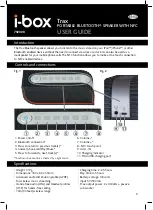
2) Considerations
A. The approximate frequency deviation for a given VCF IN signal can be
determined as follows, The 0.1 V change at the VCF IN BNC produces a
frequency change of 1% of the highest frequency obtainable on a given
range. For example(8202), the highest frequency obtainable on the 100 K
range is 200 KHz. One percent of 200 KHz equals 2 KHz. Therefore, 0.1 V
change at the VCF IN BNC will deviate the output frequency 2 KHz on the
100K range. Following table summarizes the frequency deviation versus
VCF IN voltage for all ranges.
HIGHEST FREQ.
OBTAINABLE(Hz)
FREQ. DEVIATION FOR EACH
0.1 VOLT VCF IN CHANGE(Hz)
RANGE
8102
8103
8105
8110
8102
8103
8105
8110
1
2
3
5
10
0.02
0.03
0.05
0.1
10
20
30
50
100
0.2
0.3
0.5
1
100
200
300
500
1k
2
3
5
10
1K
2k
3k
5k
10k
20
30
50
100
10K
20k
30K
50k
100k
200
300
500
1k
100K
200k
300k
300k
1M
2K
3k
5k
10k
1M
2M
3M
5M
10M
20K
30k
50k
100k
Frequency deviation versus VCF IN voltage for each model.
B. For an example(8102), it is assumed that we wish to generate a 455 KHz
signal with FM deviation of
±
15 KHz (30 KHz swing). 1M range will be used
to obtain the 455 KHz carrier with the FREQ. dial set to 0.455. The highest
frequency obtainable on the 1M range is 2 MHz. One percent of 2 MHz is 20
KHz. Our requirement of 30 KHz deviation is 1.5 times greater than 20 KHz
deviation produced by a 0.1 volt VCF IN swing, thus we will use 1.5 times as
much peak-to-peak voltage swing or 0.15 V.
STATED ANOTHER WAY: SUBSTITUTING THIS EXAMPLE:
desired deviation 30 KHz
1% deviation 20 KHz
C. Remember that the value of VCF IN signal is the peak to peak amplitude.
x0.1 V = required VCF IN signal
x 0.1 = 1.5 x 0.1V = 0.15V
Содержание FG-8102
Страница 29: ...Square Wave Selected Dual Trace Oscilloscope Preferred...
Страница 34: ......















































